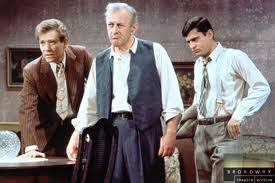

At Broadway Educators, we hear from teachers who say that students have difficulty in reading and understanding plays. It’s great if you can see the play. But that’s not always possible. Yet reading a play script is a good skill to have. Broadway Educators has three quick tips that you can incorporate into your section focusing on drama.
Tip One: The Thinking Overview

This is a common step and if you’re a teacher you’re probably already offering students and overview of the play. What is important in giving them the overview is to make it succinct. Stick to basic plot, important turning points and a few attributes that define each character.
Then be sure to ask questions within the overview. As in, if you are going to read Arthur Miller’s “Death of a Salesman” and you explain that at the beginning of the show Willy has turned around and abandoned his business trip, ask them to consider what each member of his family might think and feel? Get them thinking like the characters.
Tip Two: Active Group Sessions
Approach plays actively. Plays are meant to be performed (heard and seen), and reading them silently means everyone misses out on the experience entirely. Utilize active sessions by breaking the class into groups, assigning them scenes to read aloud as a group and to then discuss. You’ll need to give them guidelines for discussion. These can be character, action or plot based.
In creating groups make sure you use a mix of students for each group. One very useful way for a group approach a scene is to have them read it aloud and then have them switch roles and read it aloud again. They can then discuss what they discovered about the scene by switching roles. Assign short sections of the play and coach students to be loud and clear with their lines.
Bring the class together for a reading of each scene. This works best if the class is in a circle and able to connect with one another.
Tip Three: How’d You Say That Line?

When the scenes are read aloud one thing you can do is ask why students decided to deliver a line a certain way. Ask what the emotion they are portraying, what their character wants in the scene of from another character or what the line reading says about their character. Then discuss how else it might be played and try the line different ways. Read enough of the scene so that you are able to then discover and discuss any new ideas the revised reading has inspired. This is not about finding the one right way to read or play the line. It is about illustrating how lines can be interpreted in different ways and how that can change how we perceive a character, scene or action.
Plays Are Malleable
Perhaps one of the most important things to remember is that plays are extremely malleable. Although there are certain themes that you want to ensure that students understand, the fact is that plays are open to interpretation. There have been four Tony-winning productions of “Death of a Salesman” on Broadway and each has been different and each amazingly insightful. Be open to new discoveries that can lead to revelations, insights and some amazing discussions.
We’ll be offering more tips regarding how you can approach drama in the classroom and the creative manner in which you can help students actively understand a play.

 Random Item
Random Item